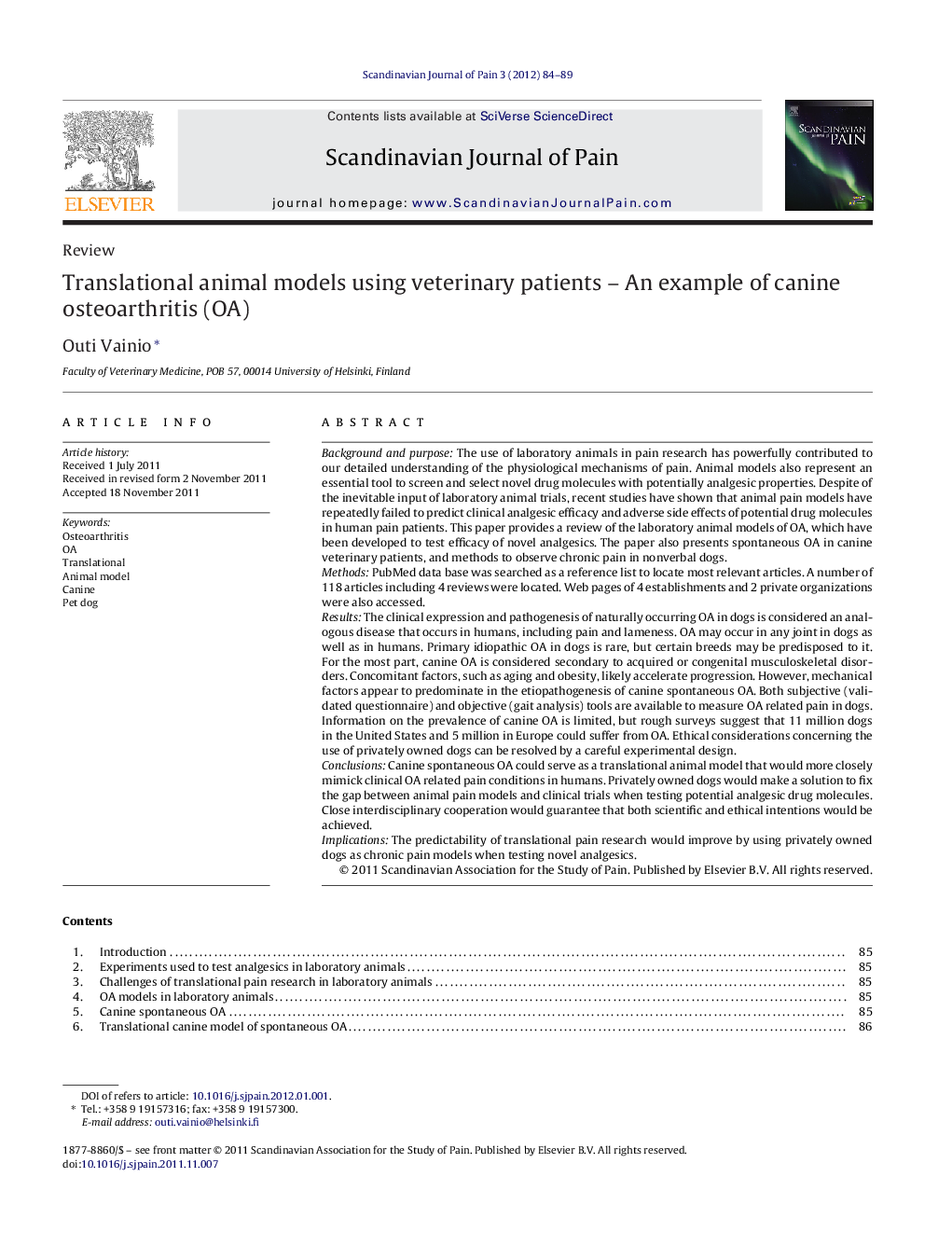| کد مقاله | کد نشریه | سال انتشار | مقاله انگلیسی | نسخه تمام متن |
|---|---|---|---|---|
| 2770779 | 1567825 | 2012 | 6 صفحه PDF | دانلود رایگان |

Background and purposeThe use of laboratory animals in pain research has powerfully contributed to our detailed understanding of the physiological mechanisms of pain. Animal models also represent an essential tool to screen and select novel drug molecules with potentially analgesic properties. Despite of the inevitable input of laboratory animal trials, recent studies have shown that animal pain models have repeatedly failed to predict clinical analgesic efficacy and adverse side effects of potential drug molecules in human pain patients. This paper provides a review of the laboratory animal models of OA, which have been developed to test efficacy of novel analgesics. The paper also presents spontaneous OA in canine veterinary patients, and methods to observe chronic pain in nonverbal dogs.MethodsPubMed data base was searched as a reference list to locate most relevant articles. A number of 118 articles including 4 reviews were located. Web pages of 4 establishments and 2 private organizations were also accessed.ResultsThe clinical expression and pathogenesis of naturally occurring OA in dogs is considered an analogous disease that occurs in humans, including pain and lameness. OA may occur in any joint in dogs as well as in humans. Primary idiopathic OA in dogs is rare, but certain breeds may be predisposed to it. For the most part, canine OA is considered secondary to acquired or congenital musculoskeletal disorders. Concomitant factors, such as aging and obesity, likely accelerate progression. However, mechanical factors appear to predominate in the etiopathogenesis of canine spontaneous OA. Both subjective (validated questionnaire) and objective (gait analysis) tools are available to measure OA related pain in dogs. Information on the prevalence of canine OA is limited, but rough surveys suggest that 11 million dogs in the United States and 5 million in Europe could suffer from OA. Ethical considerations concerning the use of privately owned dogs can be resolved by a careful experimental design.ConclusionsCanine spontaneous OA could serve as a translational animal model that would more closely mimick clinical OA related pain conditions in humans. Privately owned dogs would make a solution to fix the gap between animal pain models and clinical trials when testing potential analgesic drug molecules. Close interdisciplinary cooperation would guarantee that both scientific and ethical intentions would be achieved.ImplicationsThe predictability of translational pain research would improve by using privately owned dogs as chronic pain models when testing novel analgesics.
► Recent studies have shown that laboratory animal pain models have repeatedly failed to predict clinical analgesic efficacy and adverse side effects of potential drug molecules in humans.
► Animal models that more closely mimick clinical pain conditions has been requested.
► The clinical expression and pathogenesis of naturally occurring canine OA is considered an analogous disease to that which occurs in humans, and OA in domestic dogs is quite prevalent.
► Pain and pain-relief in canine OA in veterinary patients can be evaluated by owners and by instruments for objective gait analysis, promising improved predictability of translational OA-pain research.
Journal: Scandinavian Journal of Pain - Volume 3, Issue 2, April 2012, Pages 84–89